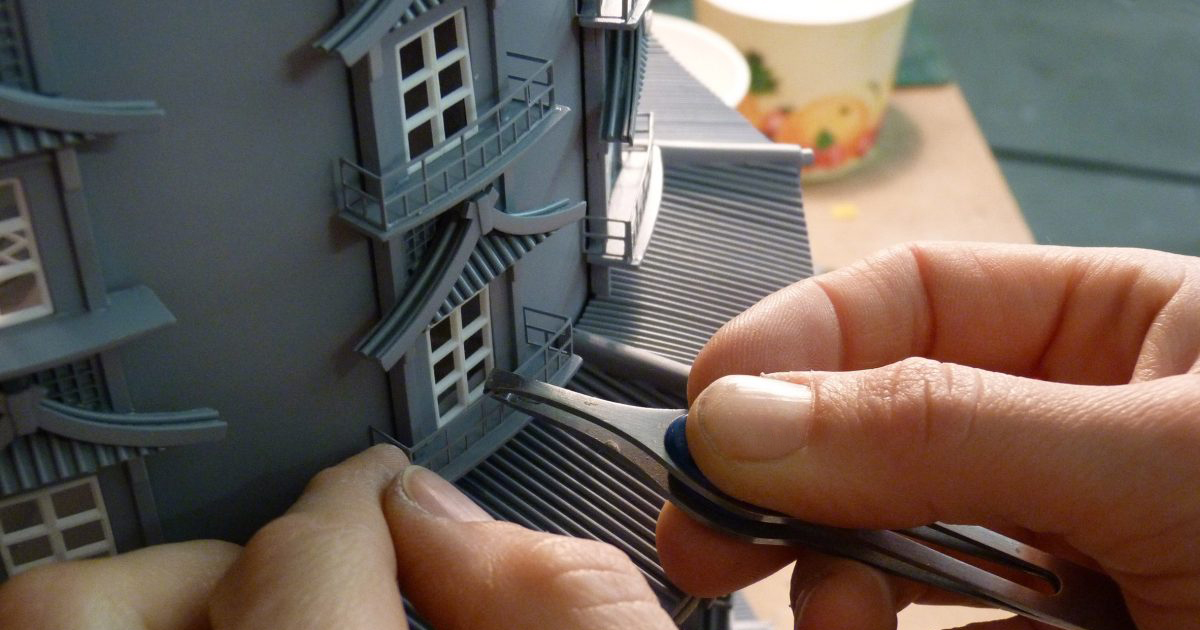Mike LaValley is the architect, speaker, and writer behind Evolving Architect. For more creative and nerdy insights, follow him on Instagram or check out his upcoming book.
2019 marked the end of something profound to myself and my career. I have worked in the profession of Architecture for 10 years. In May 2008, I graduated from Syracuse University with a hope, a dream, and a whole lot of student loans. It turns out that college at a private school is expensive.
Nevertheless, I was bright-eyed and bushy-tailed, ready to take on the world.
And although I meant well from the beginning, the road to getting here wasn’t easy. It was paved with lessons both professional and personal that have shaped me into the person I am today.
As a way to reflect on who that person is, I’ve broken down the 10 most important lessons I’ve gleaned from working in the profession and practicing my craft. These aren’t in any particular order (except for #10 – it’s objectively the best because I said so), but they may mean more or less to you depending on where you are on your own career path today.
Enough chit chat! Let’s get started.
Lesson 1: Fast, Good, Cheap. Pick Two.

Image via Jems
It makes sense, right? Someone starts an architecture firm in order to make money. Sure, there’s the idyllic hope that every firm owner is trying to better the world through design, but if the office isn’t making money, you don’t have a job.
In comes practicality.
I learned very early on at my first job that there are really only three factors that directly affect a project. Speed, quality and cost. Depending on who you talk to, or who you work with, each project will prioritize those three factors in a different order.
It’s up to you as the Architect to work within the priorities and develop a project that best resonates with the client. Now, that said, many clients want all three — but it literally isn’t possible.
For example, let’s say you’re making something quick and cheap. For simplicity, let’s say it’s a rocking chair. If I skimp a bit on the materials and purchase some scrap wood and basic nails, I could probably make a chair fairly quickly. There’s no guarantee that it will be good though. To be honest, there’s no guarantee it will even last much longer than a few sittings.
Let’s flip that around and say that we want a chair that’s done well and quick. In that case, I could probably fabricate a great chair and make it happen in relatively little time, but you better believe it will be expensive. I wouldn’t break myself down just to get a high quality product to you quickly without being properly compensated.
It’s just a fact of life – you can have something fast, good, or cheap. It’s up to you to decide what matters most. But hey, at least you can pick two.
Lesson 2: Develop skills to make yourself invaluable
I started working three months before the world melted in 2008 and the Great Recession wreaked havoc across the globe. I couldn’t have predicted it in my wildest dreams.
As entrepreneur Gary Vaynerchuk sometimes refers to the market dips, it’s like ‘getting punched in the face.’
There were many times in the first years of the Recession when I caught myself trying to figure out what my next moves were. Would I get fired? Would I need to change jobs? When would my next raise be? Would I ever get a raise again?
The questions stopped being focused on the negative when I realized something simple – I need to make myself invaluable.
Instead of focusing on all of the possible negative outcomes that I couldn’t control, I started pouring into skill building, learning, and self improvement.
It may not be at the forefront of the profession’s mind today, but when I started working, LEED was the only thing I heard people talking about. I knew that not everyone had a LEED AP credential, but I also knew it was a straightforward way for me to set myself apart.
When an opportunity came up to bring a renovation project through the LEED process, I jumped at the chance to help. At the time, you needed direct experience with a LEED project to acquire the LEED AP credential. I took charge and did everything I could to learn more about sustainable design and help move the project forward.
In February 2012, I walked into the credential testing center and walked out three hours later as a LEED Accredited Professional.
The credential today doesn’t mean quite what it did when I got it, but for several years, it gave me something else that many of my peers didn’t have – a marker that identified me as a professional. While many of my friends were waiting to get their experience, I took the initiative to go and get it myself.
I became more confident in my skills and ultimately took my credential and kept pushing myself farther.
Lesson 3: School experience isn’t the same as job experience

Image via Archinect
When it comes to working in an architecture office, the first thing I always imagined I’d be doing out of school would be almost identical to what I did in studio. Anyone who’s ever actually stepped foot inside an architecture office knows that it’s something quite different.
In fact, the two are so at odds with each other sometimes that you have to remind yourself of what made you become an architect at all.
I don’t mean that in a cynical way by any means. It’s just that an architecture operates under a different set of rules.
When you’re in school, your professors are trying to teach you methods for analyzing problems in a ‘safe’ environment. It may seem like torture sometimes depending on who your professors are, but your decisions in studio are far more likely to kill a stick figure in your drawings over your neighbor in a local development project.
When you’re in an architecture office, design decisions have a real impact on cost, schedule, constructability, and ultimately, the safety of those who use the buildings you design.
However, I don’t believe that school experience is invalid. Quite the opposite – I think the framework you create for yourself can be invaluable in terms of how you approach problem solving and creative thinking.
The difference is that you need to refocus that creative know-how back into the world. The world has constraints that you can’t even imagine when you’re in school. Learning the constraints inside and out is the only way you can learn to break them without getting someone killed.
Architecture is not for the faint of heart.
Lesson 4: No one will tell you how to shape your career
I love trying to figure out what the next phase of my career looks like. I sincerely treat my career like an adventure.
I pick the vehicles, the pit stops and the destinations.
The hard truth though – no one will choose your adventure for you.
There’s a lot of autonomy needed to practice architecture. It’s very easy to wake up after years of drafting only to find out that you don’t have all the requirements met to even get your license.
You have to take charge of each step.
Now, don’t get me wrong here. I don’t mean that everyone needs to follow the SAME path, just A path.
You’re more than likely to find a bunch of peers at your office ready and willing to help you make some of these decisions based on their own experiences, but ultimately it comes down to what you want from your professional life.
Choose the adventure you want to look back on years from now and say, ‘yeah, I did that myself.’
Lesson 5: Networking is the most important career trait to nurture

Image via Architizer / Young Architect Conference
You know something crazy? I’ve had jobs at three different firms. One was only for a summer internship. The other two were full-time positions.
Okay, not too crazy.
But this is – NONE of them came without previously networking with the owners of those firms.
I met my first boss interviewing to go to Cornell University (I didn’t go there, but that didn’t matter). I met my second boss through the Syracuse Alumni Network. I met my current boss volunteering with my local AIA (American Institute of Architects) Chapter.
I can’t emphasize what networking has done for my career. Whether it was making connections with alumni or just putting myself out into the community, I look back and realize that it’s very possible to create your own luck.
Now, if I had made a bad impression with any of these gentlemen, I could have had a very different career experience. Networking isn’t something that you do in the short term. Networking is a skill that needs nurturing.
The weirdest, most frustrating thing about networking is that you have no idea when the connections will matter in your career. To be honest, some won’t in direct ways.
But networking hasn’t only provided me with jobs, it’s given me good friends, and made me more outgoing than I would have been on my own. My advice, be present with everyone you meet. You never know if that person might just be your next employer or friend.
Lesson 6: You don’t know, what you don’t know. If you don’t know, ask
The lesson I see most people around me break is that they don’t know what they don’t know. It’s the most difficult rule to recognize you’re breaking because you don’t even realize you’re breaking it.
The way I get around this — assume you know nothing.
Don’t worry about what others think when you’re asking a million questions. Questions are the best!
Would you rather make a decision without thinking about it because you’ve just ‘always done it that way’, or would you rather ask questions to someone more experienced for another point of view? When in doubt, just ask a bunch of questions. If you don’t truly know the answer to something you’re working on, you have to ask.
Lesson 7: Work on your own projects outside the office

Image via Avimeo
I personally love this lesson. Very early on in my career, I realized that I needed to develop my own portfolio of work outside of the office. You might ask yourself, “Mike, why would you ever need to do that when you’re working on such great projects IN the office?” It’s a fair question, and a good one.
I’ve always seen myself in control of my own career, my own destiny. I treat almost everything I do in my career with that mentality. Let’s take a theoretical side step: What if you weren’t allowed to use ANY of the drawings, renderings, sketches, or models in your own portfolio?
It seems a bit odd, but it happens in our industry. Whether it’s an employer’s desire to keep intellectual property (which to be fair, they’re paying you to create) or there’s a contractual clause an employer has with the client (also very fair to recognize), you may not be able to take that awesome work with you wherever you go.
That’s why I don’t worry about it.
Sure, I’ve built a solid resume from working on the variety of projects I have in the office, but I come from an early career experience when the world was melting and I needed to make myself invaluable. That type of feeling has never really left and I think it’s served me well.
In 10 years, I’ve entered almost as many independent design competitions. It probably sounds odd, but I don’t care if I win. I use the competitions as a framework to develop killer projects that mean something to me and that I can use in any portfolio I choose because they’re MY designs.
I have two rules with each competition I enter. I have to end up with some kind of tangible product (graphic, model, etc) that I can use in the portfolio. I have to learn a new technique, program, or building type to advance my skill set. If you enter a competition with the rules above, I can tell you now that you’ll exponentially learn more and have the proof that you did.
Also, competitions are really fun.
Lesson 8: Always take responsibility for your actions
I’m not perfect. Not even close.
I make mistakes all the time. Sometimes they’re small and sometimes they’re not. But I always glean something from the heartache, solve the problem and move on a bit wiser. The trick is to take responsibility though for EVERY, SINGLE, MISTAKE you make.
I can’t emphasize that enough. I mean, I could with bigger font, but you get my point.
Above the others, there is one mistake I remember like it happened yesterday. It haunts me a little.
When I was working on a renovation project in the earliest years of my career, I was in charge of reviewing potential products for a series of windows. The project was a private development to convert a historic three story building into office and residential space. The project was required to obtain a LEED Silver rating (a mid-level of sustainability accreditation for a building).
I looked at the recommended criteria that were established by the sustainability consultant for the windows. I was able to quickly identify that of the seven preliminary selections that were made by a supervisor, all except two could be chosen based on the criteria needed to meet sustainability baselines.
Five possible windows.
I let my supervisor know what I had found and he, in turn, told the Construction Manager that any of the five would be acceptable selections for the project. Side note they were all basically the same. Key word – “Basically.”
The contractor ordered something like 35 of these large, historic, sustainable super windows and everything seemed fine.
That was until I realized that one of the windows didn’t quite match ALL of the criteria. As it turns out, U-Factor is kind of a big deal. For the uninitiated, it essentially measures how well a window insulates.
Can you guess which of the remaining ‘acceptable’ windows the contractor ordered?
Yep. The ONLY one remaining window that didn’t match the criteria we needed to hit to maintain the energy model for the overall building.
When I realized the error, I had two options:
Accept the mistake I made and inform my supervisor that I had essentially cost the project thousands of dollars because of one number I missed.
Pretend it never happened and go about my life.
Look, as much as it would have been great to pretend, that’s just not who I am.
I walked straight into his office, paperwork in hand, and explained what had happened.
I don’t remember what I looked like in that moment, but I imagine there was very little color in my face with a hint of panic.
The most interesting thing happened though – I wasn’t yelled out of the office for being ‘stupid’ or even fired (both of which I assumed were perfectly acceptable scenarios). My supervisor looked at me and simply said, ‘thank you, Mike for bringing this to me.’
We both knew what had happened. He could see I was already pretty tormented by it.
Oh, and if I had just ‘pretended’ it away – we wouldn’t have found other ways to fix the error without replacing the windows. We wouldn’t have solved the problem. In fact, it would have become much, much worse once all of the final paperwork had been assembled for review, once the building was done, once everyone had stopped working.
Long story short — if you mess up, own it. It will suck in the moment, a lot. But if you don’t own up to your mistakes, you could be inadvertently running toward disaster rather than stopping it in its tracks.
Lesson 9: Master the art of communication

Image via Land Civil
Do you know what the most valuable course was that I took in High School?
Typing.
When you start practicing architecture, I don’t honk anyone expects the mountain of writing you’ll have in front of you.
I write everything from emails to reports, requests for proposals to contracts and all documents in between. Over time, I’ve started to really enjoy it too. I can’t explain why other than to say that writing has become another way for me to express a part of me that I couldn’t otherwise.
I’ve been introverted for the majority of my life. Only in the last few years have I really come out of my shell and put myself out there.
In a lot of ways, writing allowed me to share my voice on my own terms.
That said, communication in all forms is the quintessential skill for an architect to master.
Think about it this way – drawings, specifications, renderings, sketches, emails, phone calls, etc. – they’re all just methods to explain your intent and your vision to someone else.
If you were the greatest architect in the entire world (I have no doubt that you could be), but you couldn’t explain your designs to anyone – you would never realize any of your greatness.
Don’t take for granted the power of your voice in any medium.
Lesson 10: Keep learning always
I’m a real believer that an Architect’s journey on the path to learning never ends. Once you’re in the profession, you’re in for life.
The most profound lesson I’ve learned in the last year or so is that I will never actually learn everything the profession has to offer. In some ways I have to be okay with that.
I have to realize that the profession of architecture is more like a never-ending buffet.
Sure, you need to practice moderation and balance the types of courses you choose to make sure you’re well-rounded, but you have so much knowledge at your fingertips that you also need to try a LOT of different things to stay relevant and strong.
I hope you’ve latched on to at least one of these lessons. It took 10 hard years for me to learn them.
Here’s to ten more.
Architecture – you and me, we’re gonna be alright.
This post originally appeared on Mike LaValley’s Evolving Architect blog. Architects: Showcase your next project through Architizer and sign up for our inspirational newsletter.








